- Learning time
- 30 minutes
- First play time
- 90 minutes
Mystery of the Abbey
Designed by: Bruno Faidutti,Serge Laget
In Mysteries of the Abbey, a monk has been discovered, dead. Who is the killer? At the start of the game one of 24 suspect cards is placed underneath the board itself – this is the identity of the killer, currently known to nobody. The remainder of the suspects are divvied up between the players, with a few left unknown to all, to be discovered during play. Each of the suspects (all monks) belong to overlapping groups: Fathers, Brothers, and Novices, and their appearance is also divided into bald/not bald, bearded/clean-shaven and fat/thin.
Players each have a sheet to keep track of their knowledge. They can cross out their own suspects on here at the very beginning, of course, but a number of cards will periodically be passed around the table – or stolen from each other – as the game progresses, and you’ll continue to whittle down your suspects until you think you’ve identified the killer.
On your turn you’ll firstly move your monk. They all start in the Chapel, and can move one or two spaces around the Abbey. If you end your turn in a particular room, you can collect a card. A suspect card obviously allows you to eliminate another suspect, a crypt card gives you a free turn, and the scriptorium cards give you in-game advantages. The bibliotheca cards are the most powerful of all – for instance, you can choose another player and look at all of their suspect cards – but they can only be picked up once in the game, and only by the player with the fewest suspect cards at that time.
If you end your movement in the same room as another monk, you can ask them a question: about one aspect of their knowledge: for instance, it might be “How many Templar Monks have you eliminated?” or “How many bearded monks do you have in your hand?”. The quizzed monk has two options – they can choose to answer, in which case they get to ask question in return (-which must also be answered) or they can take a vow of silence, in which case they don’t.
After every fourth turn, players return to the Chapel and pass cards to their left, so more an more information is being shared. An event card is flipped over, adding a little something to the plot, and a new round begins.
When players have a theory, they can choose to go to the Chapter Hall (or capitulum, as those latin-loving monks would have it) where you can do one of two things: make a revelation: which is a theory that the killer has a certain identifying element: e.g. he was a Benedictine, or he was thin, or he had a beard. Or you can make an accusation, where a specific monk is accused of the murder. If the other players have that monk as one of their suspects they must show you it. If nobody does so, the killer is revealed! Correct accusations are worth 4 points and correct revelations 2 points. Incorrect accusations are -2 points (and you miss a turn!) and incorrect revelations are -1 point. The player with the most points wins.
The guru's verdict
-
Take That!
Take That!
Players can steal cards from each other, but you can't exactly steal knowledge. As long as you're keeping track of what you know, there should be no cause for frustration.
-
Fidget Factor!
Fidget Factor!
Low. Monks can only move up to two spaces at a time, so options are hardly bewildering.
-
Brain Burn!
Brain Burn!
Crossing off a suspect when you've seen a card is easy as pie. Harder is trying to glean knowledge from questioning the other players, and marrying those limited clues with your own.
-
Again Again!
Again Again!
The description above might seem chaotic, but we've given about 90% of the rules, and once you play a couple of rounds Mysteries of the Abbey reveals itself to be a simple game - apart from the deduction, of course!

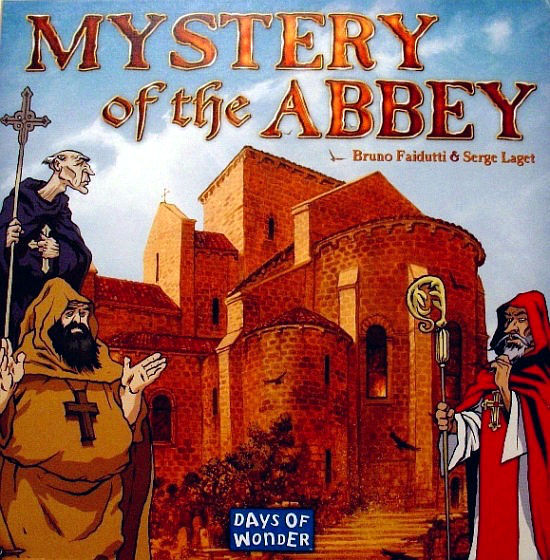




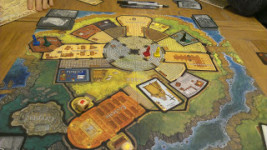

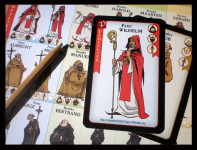
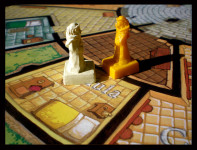


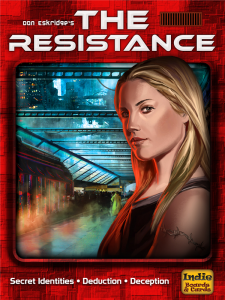
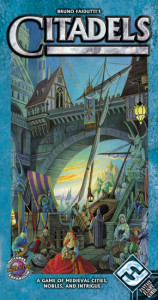
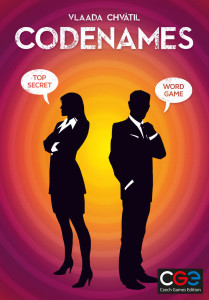


Sam says
As someone who was both rubbish at deduction and brilliant at rolling low numbers, I found Cluedo frustrating, but it's not still in high street stores for nothing, as the simple identity/location/weapon quest is what gives it appeal. Mysteries of the Abbey is slightly more complex, but to my mind better for it. The identifying features and different brotherhoods do give a genuine air of mystery, and dumping the die-roll in favour of simpler movement removes the thematic nonsense of several detectives staggering around a crime scene at erratic speeds. On our first play we even got our information all wrong thanks to making mistakes, but perversely this only added to the fun. Perhaps a little long, but I rate this game highly.